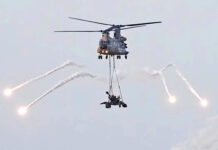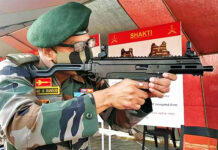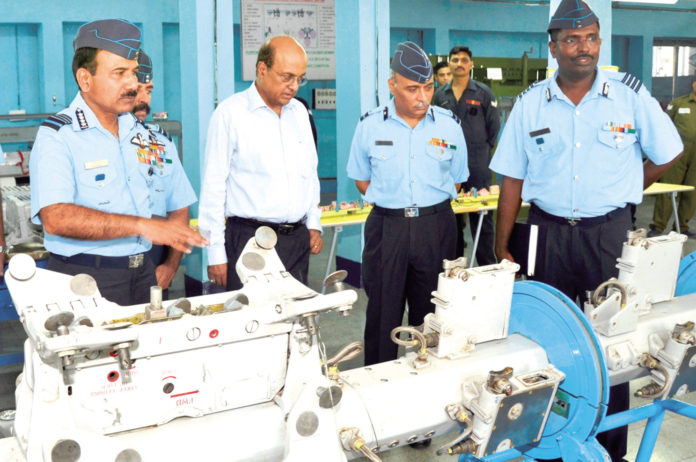

Air Chief Mshl Rakesh Kumar Singh Bhadauria, then as Air Officer Commanding-in-Chief, Training Command, Indian Air force (IAF), remarked in February 2019, that the IAF had moved a long way from the time when parts of all aircraft were imported. He said that systems and processes were more flexible than earlier, when the IAF was forced to import all aircraft components as Original Equipment Manufacturers (OEM) never gave clearance. Today, the Centre for Military Airworthiness and Certification (CEMILAC), which is the single window for quality certification, has the capability of certifying and issuing clearance for any aircraft component. He said that with the changing procurement policy, where strategic partnerships will be the major route for manufacturing and procurement of aircraft by India, production of parts will be done with emphasis on technology development. The strategy for setting up aircraft production will decide the Maintenance, Repair and Overhaul (MRO) strategies and opportunities.
“Indian industry must build MRO capability with reverse engineering” said Air Marshal RKS Shera, the then Air Officer Commanding-in-Chief, Maintenance Command, IAF while addressing an industry association event on 21 January. The IAF has challenges to maintain ageing aircraft and Indian industry needs to build capability, he added.
Military aviation overhaul is quite different from civil aviation with depth of overhaul in the military being much higher. Shera said that about 700 vendors were engaged with IAF Base Repair Depots (BRDs) and, therefore, industry had far more opportunities before it. He emphasised that industry, R&D and academia need to come under one roof to find path-breaking solutions in MRO. Upgrades of Mi-17 helicopters offered huge opportunities to Indian industry, he said. The ‘life enhancement programmes, which are a continuous requirement of the IAF, will be critical to stimulate the MRO Industry.
JD Patil of Larsen & Toubro Ltd highlighted that policy reforms by the Ministry of Defence (MoD), such as delicensing of many items, gave a level-playing field to the private sector with defence public sector undertakings (DPSU) and global OEMs. Announcement of defence corridors and access by the private sector to test ranges and government labs to pursue their R&D efforts would help start-ups and established MSMEs, he added. Meanwhile, domain experts were of the opinion at Aero India 2019 that MRO and simulator opportunities would be the growth drivers of Indian military aerospace industry.
Civil Aviation Growth and MRO Demand
Currently, North America is the largest MRO market, accounting for around 40 per cent of the world market. Asia-Pacific, China and India combined represent 22 per cent of the market. However, India handles only 1 per cent market of the global MRO business. Total MRO spend is expected to rise to US$ 116 billion by 2029, up from US$ 81.9 billion in 2019 as per the Global Fleet & MRO Market Forecast 2019-2029 by Oliver Wyman’s Aviation Competitive & Market Intelligence team. China, with its 300 MRO companies, generated over US$ 3.0 billion of its nearly US$ 7 billion MRO requirement in 2019. China offers tax breaks, better infrastructure, cheaper labour and a bigger market. China’s fleet of commercial aircraft stands at 3,376, which is over five times India’s fleet of 604. These numbers will grow to 7,209 and 1,547 respectively by 2029. The Indian MRO market will grow from current US$ 2 billion to 4 billion.
Currently only 10 per cent of the MRO work for domestic scheduled carriers is done in India. Up to 100 per cent Foreign Direct Investment (FDI) has been permitted for MRO industry. Singapore has had a viable MRO industry and spare parts base for many global civil aircraft players. Thailand is also emerging as an MRO base. Indian industry has good models to emulate in Asian neighbourhood. The revenue from aircraft heavy maintenance and modifications has the second highest share. In India, very few companies provide heavy maintenance service. If the defence MRO industry to come of age, the civil MRO has to succeed too.
Military MRO Market
The revenue generated from defence aircraft MRO has finally started going up. The prime reason facilitating this has been IAF’s large fleet size. Moreover, navy and army have their independent fleets, which further increases the size and demand for aviation MRO. Hindustan Aeronautics Ltd (HAL) provides aircraft MRO for Kiran variants, Jaguar, Mirage-2000, MiG-21 Bison, Dornier Do-228, HS-748, An-32 and Advanced Light Helicopter (ALH), Cheetah and Chetak helicopters. The revenue generated from engine overhaul has the highest market share.
In view of the military flying risks involved, the militaries focus more on the periodic maintenance of the fleet. Technology advancement is rapid in military aviation, with several upgrade contracts, which is also propelling the growth of the military aviation MRO market. Engine MRO is an extremely important part of MRO and also the most expensive one. The increasing complexity of the engine and it parts gets high priority and the militaries focus on frequent engine maintenance and periodic checks, irrespective of whether it is flying or on the ground.
Public Sector Defence Aerospace Industry In India
Indian aerospace industry today is on the threshold of entering into a new era with self-reliance in defence production. The Indian manufacturing sector is internationally competitive with international quality standards, efficiency and manufacturing facilities. Major aerospace companies are setting up manufacturing facilities in India. HAL has played a major role in the defence aviation of India through design, manufacture and overhaul of fighters, trainers, helicopters, transport aircraft, engines, avionics and systems. HAL is now ranked 34th in the list of world’s top 100 defence companies. HAL has made supplies to almost all the major aerospace companies in the world like Airbus, Boeing, IAI, IRKUT, Honeywell and Ruag, etc. Defence Research & Development Organization (DRDO) is a network of 52 defence laboratories in India and has great unfulfilled potential. BEL manufactures a wide repertoire of products in the field of radars, naval systems, defence communication, electronic warfare, optical electronics, among others.
Private Sector Aerospace MRO Players
Boeing, Airbus and Air India have MRO facilities at Nagpur. MRO services for GE aviation engines are at Mumbai. HAL and Pratt &Whitney Canada have engine overhaul facilities at Bangalore. Air Works India (Engineering) Pvt Ltd provides aviation services. The company offers line maintenance, aircraft cabin interior, commercial aircraft asset management and safety management solutions. Air Works is CEMILAC and Directorate General of Aeronautical Quality Assurance (DGAQA) certified for MRO services and provides maintenance and warranty support programmes on behalf of OEMs to defence establishments in India for airframe-related MRO. Max Aerospace & Aviation Ltd at Juhu airport and Hyderabad Aircraft Maintenance Company (HAMCO) at Hyderabad overhaul avionics and electrical and airframe services. Taneja Aerospace & Aviation Limited (TAAL) is part of the Pune-based Indian Seamless Group. TAAL was established in 1994 as the first private sector company in the country to manufacture general aviation i.e. non-military aircraft.
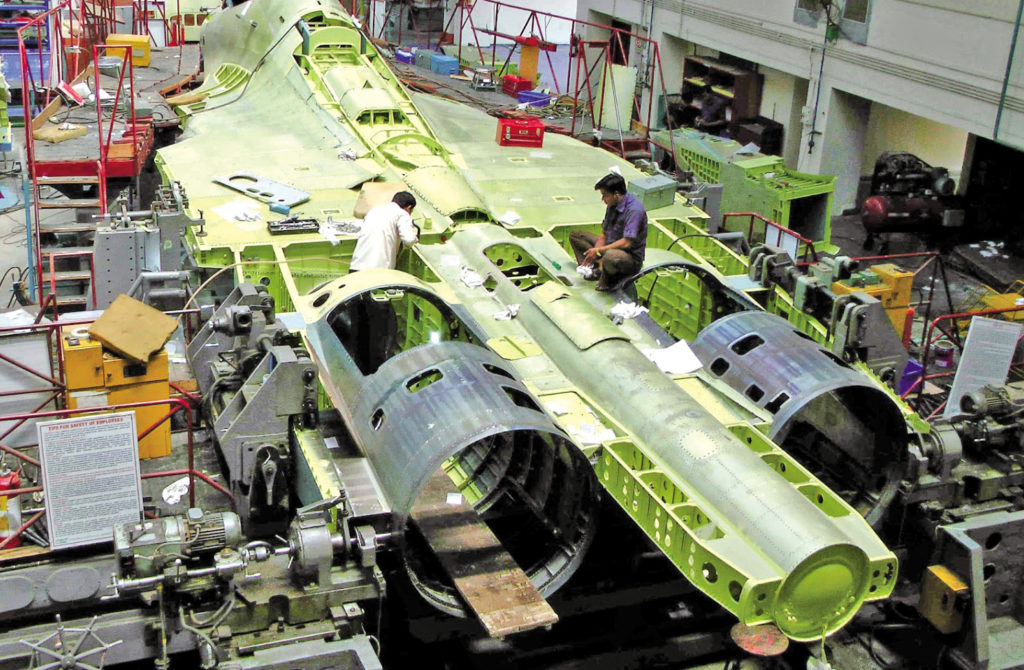

CEMILAC Clearance
Airworthiness is the continued capability of the aircraft/equipment to perform satisfactorily and fulfill mission requirements, throughout the specified life in the prevailing environments with acceptable levels of safety and reliability. All airborne items need to be certified and approved for airworthiness before use on military aircraft. CEMILAC, is the regulatory body under DRDO located in Bangalore whose primary function is certification and qualification of military aircraft and airborne systems. It has 14 regional centres located across the country. It is the single window for quality certification. Military systems MRO will require CEMILAC clearance.
Maintenance Command (MC) & Base Repair Depot (BRD)
MC is responsible for maintenance of IAF equipment. MC plans for repair agencies including inventory management of spares. It also coordinates with supply agencies. Various BRDs come under MC. BRDs are the IAF agencies that carry out major repairs and overhaul. Since the BRD is responsible for repair, it does its material planning and storage of spares required for repairs. BRDs carry out provisioning and storage of 3rd and 4th line spares, and also of 1st and 2nd line in a few cases. They transcript unfulfilled demands to HQ MC/Air HQ. MC and BRDs greatly support indigenistaion and interface with domestic industry and for sourcing many items for its own overhaul tasks. The government has decentralised provisioning and procurement to Equipment Depots (ED) under MC in coordination with BRDs. A manual of indigenisation has been issued by HQ Maintenance Command.
IAF Overhaul Requirements
It is a challenge to maintain old aircraft and legacy systems. Each aircraft and system has a finite life and needs either overhaul or replacement. Overhaul schedules are different. Industry will have to take mostly the major overhauls. Overhaul processes require special jigs and tools. They also require expertise. The quantum of flying being undertaken in each fleet is known and requirement of overhauls can be predicted. There is, therefore, some amount of clarity in the task and job required for overhaul. It will make it is easier for industry to do logistic and economic planning based on such predictions. Industry would have to be competitive and ensure time and cost savings vis-a-vis overhauls carried out abroad. Success of the industry could also relieve the IAF of some non-core activities. Foreign manufacturers will also benefit by setting facilities with Indian partners in terms of cost savings and supporting their other global customers for similar systems. The depth of military aircraft overhauls is much higher. IAF operates nearly 240 Mi-17 variants. There are civil variants of this platform. This could be a great starting point.
Rotable Repairs
Rotables is a term used in IAF for items which are capable of being economically repaired and reused. These can be replaced at an IAF field unit or by an appropriate repair/overhaul agency for repair/overhaul. The sub assembly must be removable and replaceable. The items have a reasonable turnover, and have a defined life that is based on ‘Time Between Overhaul’ or ‘Mean Time Between Failure'(MTBF). Line Replaceable Units (LRU) not fulfilling the above criteria may still be considered as a rotable based on the criticality of the item. This is important for electronic equipment where there is a high rate of obsolescence.
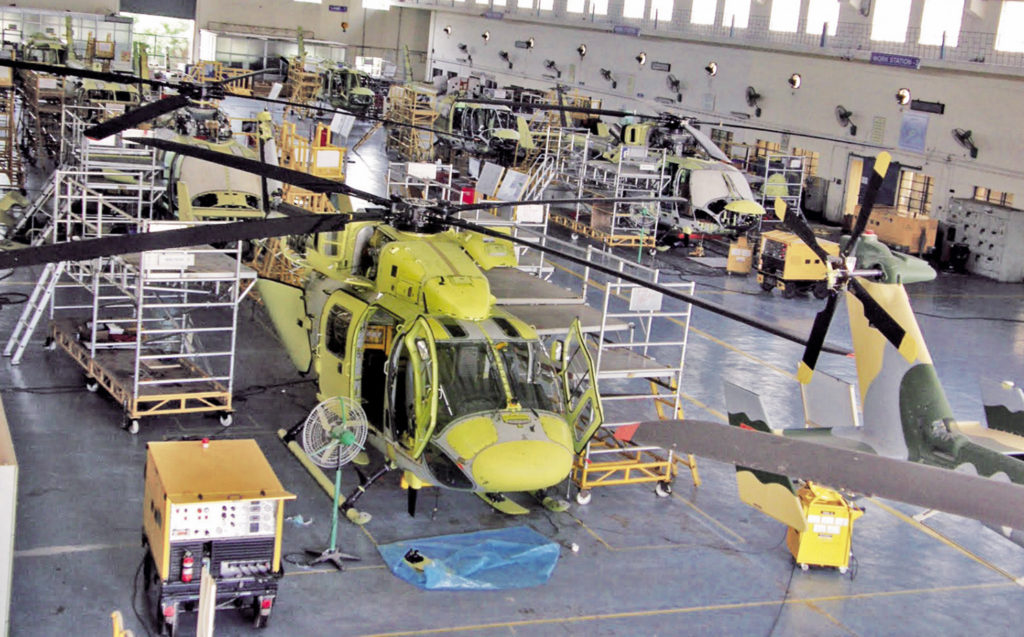

IAF Spares Requirement
In the absence of significant local aerospace industry, for decades IAF had no choice but to import spares from OEM. There also was not much flexibility as the OEMs were unsure and unwilling to either set up shop or tie up with local manufacturers for want of expertise and quality control. Indian industry is today making international grade systems for the space and automobile sectors. Manufacturing is of exacting standards and tolerances and there is significant civil and military sector demand. There is, thus, scope for tie ups to manufacture and repair spares locally.
Cat D Repairs
State of all items is designated by Category. Cat ‘A’ being fully functional and Cat ‘E’ being beyond economical repair. Repair of Cat ‘D’ items require relatively more industrial processes. Sending items to foreign OEM takes a long time and entails larger inventory. Also, it costs significant foreign exchange. There is, thus, great scope for local industry to try and identify and indigenously repair these items even if it means seeking OEM expertise in some cases.
Door-to-Door Repair
High serviceability of any aircraft and system is crucial for optimum operational utilisation. World over, the concept of door-to-door repair has evolved. The manufacturer signs a contract to pick-up the item requiring repair from the user airbase and delivers/replaces with the serviceable item at the airbase. Such contracts greatly save time and improve item availability. The cost of collection and delivery and float management is factored into the contract. There is great scope if MRO facilities are set up in India.
DPP – Make In India Push
The Defence Procurement Procedure (DPP) 2016, which came into effect from April 2016, focuses on giving a boost to ‘Make in India’ initiatives by promoting indigenous design, development and manufacturing of defence equipment. A new category of procurement ‘Buy Indian-IDDM (Indigenously Designed, Developed and Manufactured)’ has been introduced and accorded top most priority for procurement. Preference has been accorded to ‘Buy Indian’ and ‘Buy and Make Indian’. Requirement of indigenous content has been enhanced or rationalised. The ‘Make’ procedure has been simplified with provisions for funding of 80 per cent of development cost by the government to Indian industry and reserving projects not exceeding development cost of Rs. 10 crore (government funded) and Rs. 3 crore (industry funded) for MSMEs. The responsibility of quality assurance of raw material used in aerospace defence products rests with DPSUs, DGAQA. etc. All these and armed forces have their own laboratories or test facilities at various locations across the country to check the defence products. The strategic partner route will open up manufacture and procurements of aircraft and systems made in India. Production of parts will get technological fillip. The setting up of aircraft production will certainly create MRO opportunities.
Ease of Doing Business & Economy of Scale
The government is constantly working towards ease of doing business and setting up industry. De-licensing of many items has given a level playing field for the private sector. The creation of more defence corridors will help industry get facilities at more geographical locations and exploit local labour and engineering pools at places that are more favourable. Access to government testing facilities and test ranges will help startups and MSMEs who cannot afford to create such facilities. IAF is currently the fourth largest air force in the world. IAF has or will have large fleets of Su-30MKI, Jaguars, LCA, An-32, Mi-17s, etc. Larger fleets offer greater scope for indigenisation and MRO in India. There are also commonality of items in some fleets.
Opportunities and Challenges
Availability of low-cost MRO manpower has given India an added advantage from the rest of the MRO hubs in the world such as USA, Europe, Singapore and others. One of the biggest growth restraints for the market has been high taxes and custom duties levied on the MRO sector, which has made them comparatively costlier in India than abroad. MRO services in India incur 18 per cent GST compared to zero in Sri Lanka, and 7 per cent in Singapore and Malaysia. For an industry with 6-7 per cent operating margins, combined with 15 to 30 per cent airport royalties and hangar rentals, it makes poor economic sense. This needs immediate review.
The Way Ahead
The National Civil Aviation Policy (NCAP 2016) and the opening up of defence MRO sectors needs to be harnessed. MRO providers are also turning to state-of-the-art technology such as automation to offer high-quality maintenance, thus, keeping their competitive edge. India has the potential to become a major MRO hub. Initiatives to set up MRO facilities are aligned fully with the ‘Make in India’ drive of the government. Significant manufacturing, maintenance and repair facilities have already been set up by some OEMs in India in partnership with Indian firms. These include Lockheed Martin, Boeing, BAE Systems, Thales and GE among others. They are already sourcing many items from the Indian private sector. Technical wherewithal, manufacturing expertise and skilled human resources are well established. IAF fully supports indigenisation and setting up MRO facilities at all levels. The government must support setting up MROs by giving tax (GST and import duty) concessions to local investors, to make it cheaper to do MRO in India. Many air forces in South East Asia operate similar aircraft to IAF’s, such as the Su-30. Rafale is operated by Egypt and Qatar. India must translate the changes into reality, to become a game-changer hub for the MRO industry in Asia.






